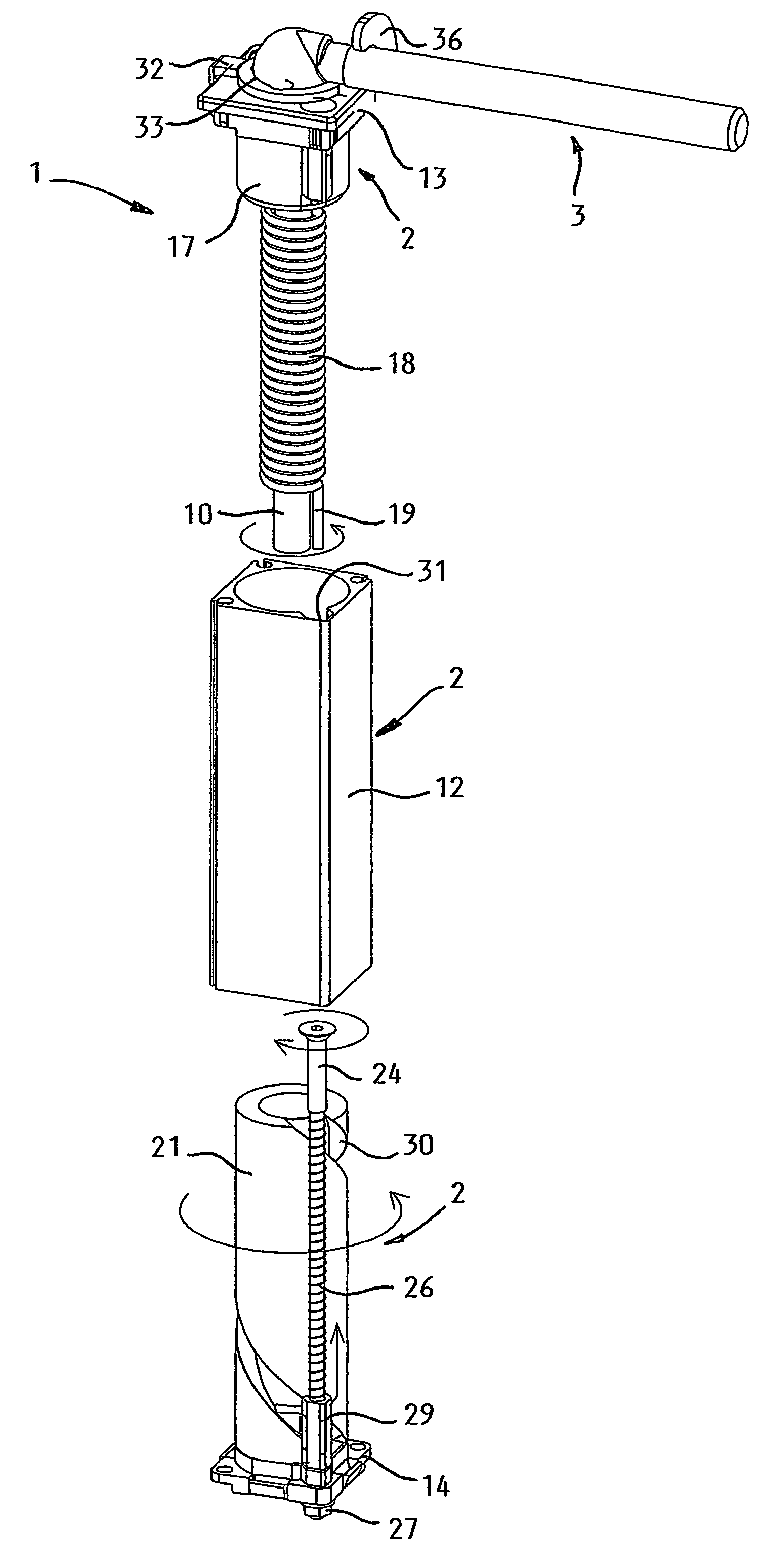Door or gate closing hinge
a door or gate hinge and hinge shaft technology, applied in the field of door or gate closing hinges, can solve the problem of holding the screwdriver, and achieve the effect of increasing the length of the hinge shaft, increasing the length of the first hinge part, and keeping relatively compa
- Summary
- Abstract
- Description
- Claims
- Application Information
AI Technical Summary
Benefits of technology
Problems solved by technology
Method used
Image
Examples
Embodiment Construction
[0019]The adjustable self-closing hinge 1 illustrated in FIG. 1 comprises a first hinge part 2 arranged to be mounted to a door or gate and a second hinge part 34 arranged to be mounted to a vertical support, in particular to a pole 5.
[0020]The second hinge part 3 is generally L-shaped. One leg of the L-shape is formed by a bolt portion 6 applied through two opposite holes in the pole and fixed to the pole 5 by means of two nuts 7, one on each side of the pole 5. The other leg of the L-shaped hinge part 3 is a cylindrical shaft 8 which fits in a cylindrical hole 9 provided, as explained hereinafter, in the upper side of the actual hinge shaft 10 received in the first hinge part 2.
[0021]The first hinge part 2 has a tubular shape so that it can be mounted in a vertical tubular member 11 of the door or gate 4. In the mounted state, the first hinge part 2 is thus hidden from view. A further advantage of mounting the first hinge part in the tubular gate member is that the hinge is more v...
PUM
 Login to View More
Login to View More Abstract
Description
Claims
Application Information
 Login to View More
Login to View More - R&D
- Intellectual Property
- Life Sciences
- Materials
- Tech Scout
- Unparalleled Data Quality
- Higher Quality Content
- 60% Fewer Hallucinations
Browse by: Latest US Patents, China's latest patents, Technical Efficacy Thesaurus, Application Domain, Technology Topic, Popular Technical Reports.
© 2025 PatSnap. All rights reserved.Legal|Privacy policy|Modern Slavery Act Transparency Statement|Sitemap|About US| Contact US: help@patsnap.com



